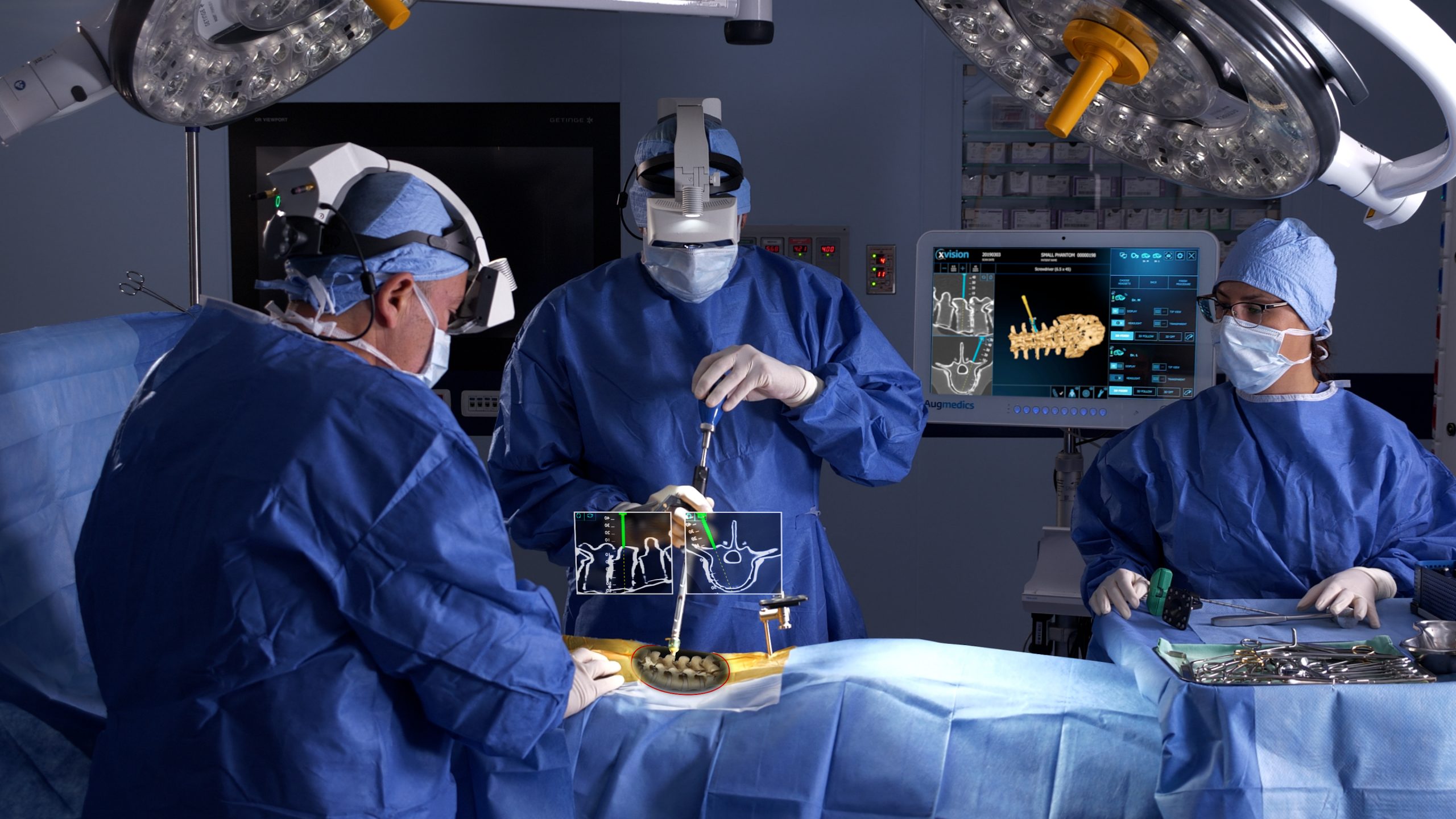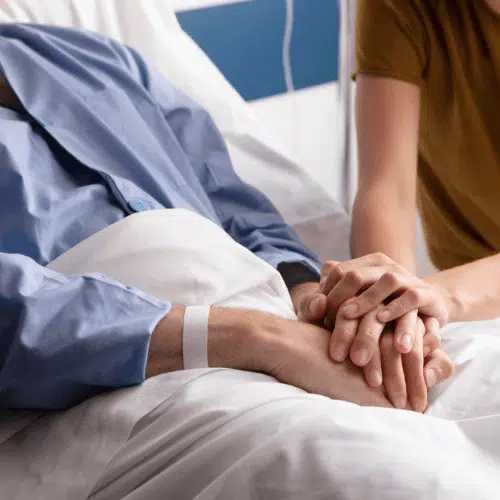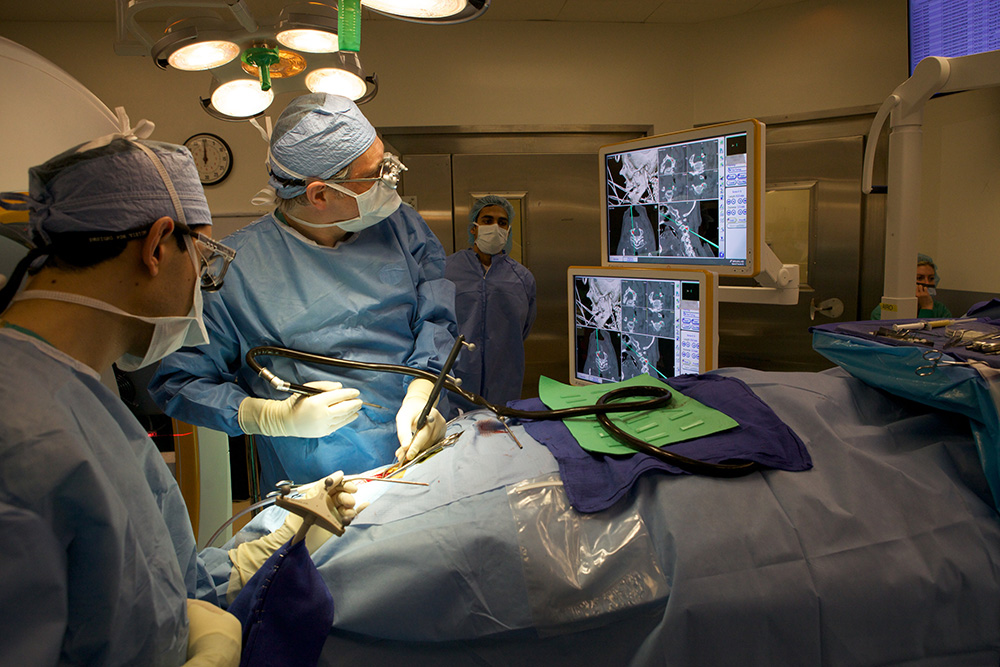Just How Insurance coverage Functions with the Best Spine Surgeons in St Louis MO
Just How Insurance coverage Functions with the Best Spine Surgeons in St Louis MO
Blog Article
An Overview of Spinal Column Problems That Frequently Cause Surgical Treatments
When traditional treatments stop working to reduce relentless signs and symptoms,Back conditions such as herniated discs, spinal constriction, and degenerative disc condition frequently require medical interventions. These problems not only lead to considerable discomfort however can likewise significantly harm everyday performance and total lifestyle. Recognizing the subtleties of each condition and the equivalent medical alternatives, such as discectomy or spine combination, is vital for effective administration. As we discover these problems even more, it ends up being noticeable that the decision-making process surrounding medical therapy is diverse and warrants mindful consideration.
Herniated Discs
Although many people with herniated discs may find alleviation through conservative therapies, surgical treatment ends up being a needed factor to consider when symptoms get worse or linger - best spine surgeons in st louis mo. A herniated disc occurs when the soft inner gel of a spine disc sticks out with its external layer, possibly pressing close-by nerves and leading to discomfort, tingling, or weak point in the extremities
Traditional monitoring generally includes physical therapy, discomfort medicines, and corticosteroid injections, which intend to lower inflammation and enhance feature. However, in cases where these methods fall short to ease debilitating signs and symptoms, medical choices might be checked out.
The most common operation for herniated discs is a discectomy, which includes the elimination of the herniated section of the disc to soothe stress on the impacted nerve origin. In a lot more extreme situations, spinal blend may be necessary to stabilize the influenced vertebrae.
Clients are suggested to go over the prospective risks and benefits of surgical treatment with their health care copyright to make an educated decision. Eventually, the objective of any surgical intervention is to bring back function, alleviate discomfort, and boost overall high quality of life for individuals dealing with herniated discs.
Spinal Stenosis
Spine constriction takes place when the spaces within the spinal column narrow, causing increased stress on the spine and nerves. This problem can establish in various regions of the spinal column, including the cervical and back areas, often due to age-related changes, such as degenerative disc disease, joint inflammation, or enlarging of tendons.
Clients with back constriction may offer with signs that consist of discomfort, tingling, prickling, or weakness, primarily in the legs or arms. These symptoms can be worsened by activities that entail standing or strolling, commonly leading people to look for alleviation with conventional therapies like physical treatment, medicines, or epidural steroid shots.
However, when these non-surgical interventions stop working to give sufficient alleviation, medical options might be considered. Usual medical treatments for spine stenosis consist of laminectomy, which entails the elimination of part of the vertebra to relieve stress, and spinal fusion, which stabilizes the affected location.
Spondylolisthesis
Spondylolisthesis occurs when one vertebra slides forward over an additional, resulting in imbalance of the spinal column. This problem can arise from various aspects, consisting of hereditary issues, trauma, or degenerative changes in the spine. It is most typically observed in the lumbar region, particularly at the L4-L5 and L5-S1 degrees.

Therapy choices differ based upon the severity of the slippage and the signs and symptoms offered. Conservative measures, consisting of physical treatment, pain administration, and activity adjustment, are frequently the initial line of defense. When non-surgical techniques stop working to relieve signs or when significant nerve compression is existing, medical treatment might be called for. Surgical choices can consist of spine fusion or decompression treatments, focused on bring back positioning and easing neurological signs. Early medical diagnosis and appropriate monitoring are essential for optimal end results in patients with spondylolisthesis.
Degenerative Disc Disease

Clients with DDD commonly experience pain that may radiate to the legs or arms, relying on the affected area of the back. The problem can be diagnosed with a combination of professional examination, imaging studies, and patient background. Treatment alternatives typically begin with traditional actions, consisting of physical treatment, pain monitoring, and lifestyle alterations. Nonetheless, when these strategies fail to provide sufficient relief, medical interventions might be taken into consideration.
Surgical options for DDD might include spinal combination or fabricated disc replacement, focused on maintaining the affected sector and easing discomfort (best spine surgeons in st louis mo). Inevitably, the choice of treatment is individualized, considering the intensity of the problem, patient wellness, and lifestyle aspects
Back Growths

Back tumors can arise from different aspects, including hereditary predisposition, environmental influences, and pre-existing medical conditions. Clients might provide with a range of signs and symptoms, including localized pain, neurological deficiencies, weakness, or adjustments in bowel and bladder feature, depending on the lump's size and place.
Medical diagnosis commonly involves imaging studies such as MRI or CT checks, which aid delineate the lump's characteristics and influence on bordering structures. In evaluating therapy options, the lump's location, type, and quality are essential considerations. Surgical treatment may be required to minimize signs and symptoms, obtain a biopsy, or remove the growth totally. The goal of surgical treatment is frequently to unwind neural aspects and support the back. Adjuvant therapies, including radiation or radiation treatment, might additionally be required relying on the tumor's nature. Early discovery and treatment are crucial for optimizing results in people with spinal tumors.
Conclusion
In recap, spinal column problems such as herniated discs, spinal constriction, spondylolisthesis, degenerative disc disease, and spinal tumors frequently demand medical intervention because of their possible to Go Here cause substantial discomfort and practical impairment. While conventional therapies may use short-lived alleviation, surgical alternatives become crucial when signs aggravate or continue. Timely medical diagnosis and treatment play an essential role in restoring feature and enhancing the top read this quality of life for affected people, emphasizing the importance of comprehensive spine care.

Report this page